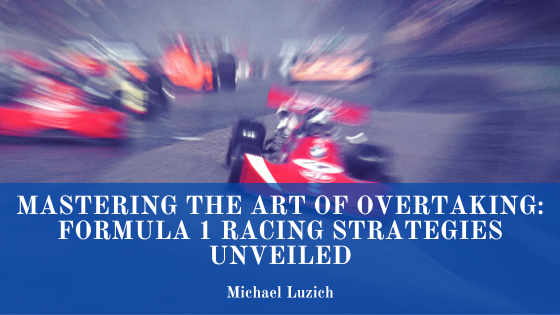In the high-octane world of Formula 1 racing, overtaking is an art form that separates the great drivers from the good ones. The ability to strategically and skillfully pass opponents is crucial for success on the track. In this blog, we delve into the intricate world of overtaking, exploring the strategies and techniques that make Formula 1 racing an exhilarating spectacle.
At the heart of overtaking lies a delicate balance between speed, precision, and timing. Drivers need to calculate risks, read their opponent’s moves, and seize opportunities with split-second decision-making. One key element is understanding the aerodynamics of the cars. When a car is closely following another, it experiences a phenomenon known as dirty air, which reduces downforce and makes it challenging to maintain grip. To overcome this, drivers often use a technique called slipstreaming, where they position their car in the turbulent air behind a competitor to gain an extra boost of speed before making a move.
Strategic tire management is another critical aspect of successful overtaking. Formula 1 races typically involve multiple tire compounds, each with different levels of grip and durability. Savvy drivers plan their overtaking maneuvers based on tire wear, aiming to exploit the optimal moment when their tires are at their peak performance. This strategic use of tires adds an extra layer of complexity to the overtaking game.
The DRS (Drag Reduction System) has become a game-changer in modern Formula 1 racing. DRS allows drivers within one second of the car in front to open a flap on their rear wing, reducing drag and increasing straight-line speed. While DRS makes overtaking more achievable, it also demands strategic timing. Deploying DRS too early or too late can diminish its effectiveness, highlighting the importance of tactical decision-making on the part of the driver.
One of the most iconic overtaking maneuvers is the late-braking dive, where a driver pushes the limits of braking at the last possible moment to surprise their opponent and slip past. This technique requires nerves of steel and an in-depth understanding of the track, the car’s braking capabilities, and the opponent’s driving habits.
Overtaking is not just about speed; it’s about outsmarting the competition. Successful drivers study their rivals, identifying weaknesses and predicting their moves. This psychological aspect adds an intriguing layer to the art of overtaking, turning Formula 1 races into a dynamic chess match on wheels.
The art of overtaking in Formula 1 racing is a multi-faceted skill that demands a combination of speed, strategy, and psychological acuity. From slipstreaming to late-braking dives, drivers employ a variety of techniques to outmaneuver their opponents. As fans, we marvel at the ballet of precision and daring that unfolds on the track, appreciating the mastery behind every successful overtake.
